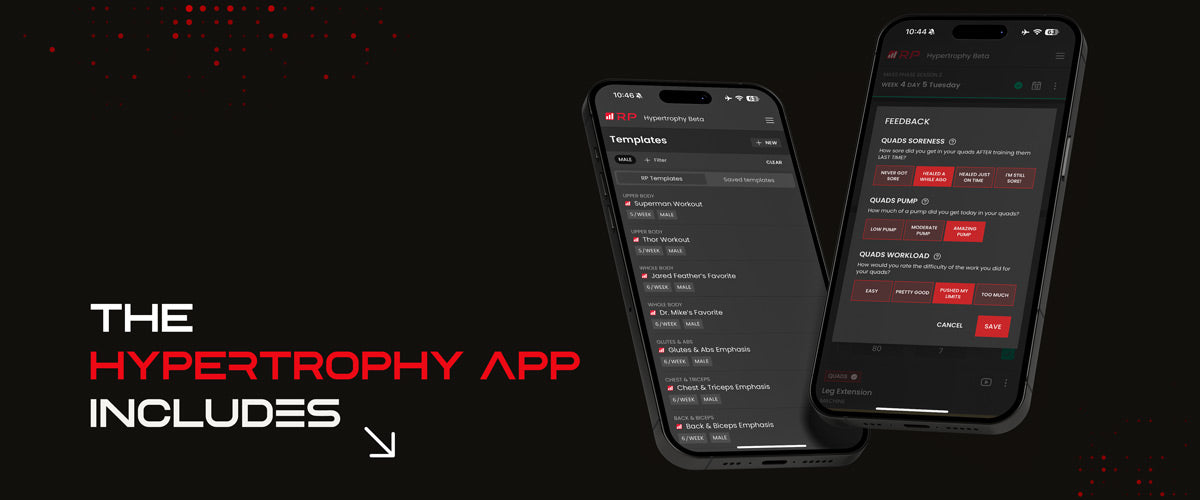
Renaissance Periodization has released a significant update (Version 1.5) to the RP Diet Coach App, fundamentally changing its approach to food logging and macro tracking. The update moves away from the signature three-step system that ignored ancillary macros in favor of a more comprehensive, single-step process that aligns with industry standards and prepares the platform for future AI integration. While this change has been a jarring adjustment for some longtime users, the core RP philosophy of a structured, meal-based diet plan remains firmly intact.
TL;DR
- The RP Diet Coach App v1.5 replaces the classic three-step food logging system (Proteins, Fats, Carbs) with a simplified, single-step process.
- The new system now tracks all macros comprehensively, including "ancillary" sources (like the protein in rice or carbs in nuts) that were previously ignored for simplicity's sake.
- The primary drivers for this change were industry standardization, a simplified user interface for new users, and preparing the app's foundation for upcoming AI-powered food logging features.
- Despite the new logging mechanics, the core value of the app—building a diet around a structured, meal-by-meal plan—remains the central differentiator from other macro-tracking apps.
Shifting from Simplicity to Precision
The original RP Diet Coach App was built on a foundation of simplicity, mirroring the structure of the old RP diet templates. It used a three-step system where users selected proteins first, then fats, and finally carbs. This process deliberately ignored ancillary macros—the small amounts of secondary macronutrients in a food source—to streamline the logging process. The trade-off was clear: users gained speed and simplicity at the cost of absolute precision, as their actual macro intake was slightly different from what the app displayed.
However, it's crucial to understand that both the old, simplified method and the new, comprehensive tracking method produce virtually identical physique outcomes. As Dr. Mike Israetel notes, no bodybuilder has ever failed to win a show because they didn't count ancillary macros, nor has anyone achieved superior conditioning simply by tracking every last gram. The difference in results is negligible, making the choice between the two systems more about user preference and functionality than physiological impact.
The Core Reasons for the Update
The transition to a comprehensive, single-step logging system was driven by three key factors:
1. Industry Standardization: Nearly every other nutrition app on the market tracks all macros comprehensively. New users coming to RP from other platforms were often confused by the unique system, expecting to see all macros counted. Adopting the industry standard makes the app more intuitive for a broader audience.
2. Simplified User Interface: While the three-step system was familiar to veteran users, it was a common point of confusion for newcomers. Many users reported being unable to find basic foods, like a banana, because they were searching in the wrong macro category. The new single-step approach eliminates this navigational hurdle entirely, allowing users to find and log all their foods in one place.
3. Preparation for AI Integration: RP is actively developing AI-based food logging, which will eventually allow users to log meals by simply taking a picture. A system that tracks all macros from the start provides a cleaner and more effective foundation for training these complex AI models, paving the way for future innovation.
What Hasn't Changed: The Power of Meal Structure
While the mechanics of food logging have been overhauled, the most important element of the RP method remains unchanged. The app is not just another calorie counter; it is a diet coach. Its primary value lies in creating a structured diet built around meals, with specific macro targets for each eating occasion based on your schedule and training. This meal-based framework encourages consistency and adherence, which are the true drivers of results.
The new update enhances this core philosophy by adding a layer of flexibility. While the default recommendations are always there to guide you, the app now allows for far greater customization. Users can easily adjust macro targets for specific meals or days to better suit their personal preferences, all while maintaining the underlying structure that makes the RP system so effective. The structure is still there, but it's now paired with the flexibility that users have been asking for.
